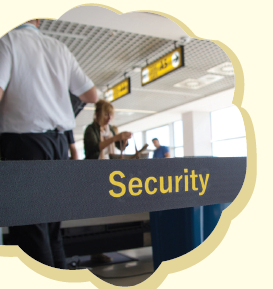SAFETY MEASURES OR NOT?
It’s hard to think logically about safety. We think that any time our health or the safety of our children might be at risk, it’s better to take as many safety measures as possible. Unfortunately, this leads to a lot of expensive safety measures that are often ridiculous, worthless or even dangerous.
After the terrorist attacks of 11 September 2001, in addition to adding dozens of safety measures to the airport security protocols across the country, the United States government has barred around 1 million people from getting on commercial planes. The no-fly list is a matter of national security, and the only way to find out if you’re on it is to be stopped or detained in the airport or if you’re in the air. For instance, in 2005, a flight from Amsterdam to Mexico was turned back before it could reach its destination. The reason was that two of the plane’s passengers were on the no-fly list and that the flight crossed over US airspace.
Safety equipment on vehicles creates a kind of strange effect. Bicycle helmets do protect our skull when it hits the pavement. However, when you consider the element of human behaviour, much of the safety measure is rendered useless. The Peltzman effect states that there is a tendency of people to react to safety regulations by increasing their risky behaviour, offsetting some or all of the benefit of the regulation. Multiple studies have shown that bicycle helmets, in the long run, don’t actually reduce the number of injuries. A 2006 study in England concluded that when cyclists wear safety equipment, motorists are more likely to hit them. Also, the study found that people in cars came an average of 3.35 inches closer to the cyclists’ bikes when they rode protected. The sight of the safety gear turned off the common sense part of the motorists’ brain.

